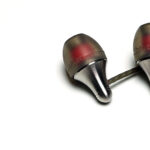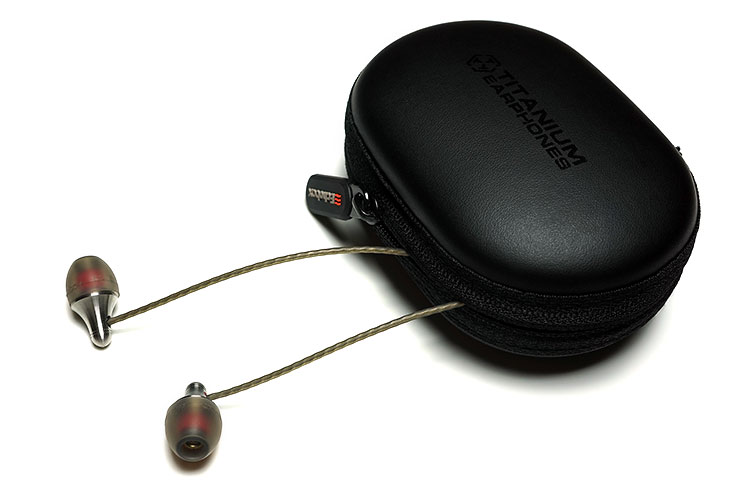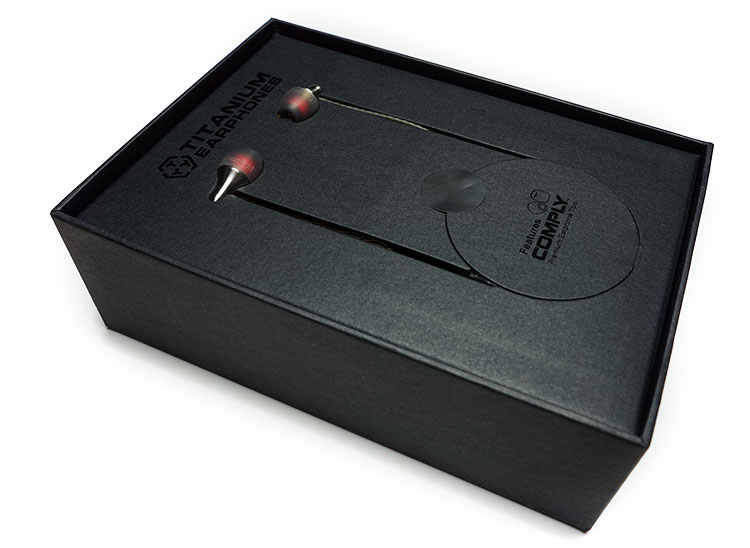Disclaimer: The Echobox Explorer sent to us is a sample in exchange for our honest opinion. We thank Echobox for this opportunity.
To learn more about Echobox on Headfonics you can click here.
I am coming a bit late to the Echobox experience and it all started with a chance discussion with CCO Sam McKinney on the joys of outdoor adventure, weight loss, and tropical islands.
Somewhere in the middle, we talked about the gear from his company, and the next thing we knew I was signed up for a review of the Finder X1. I am expecting to be meeting them also in Singapore in March, they sure do like to travel.
This attractive-looking IEM was first launched in late 2015 with some successful crowdsourcing campaigns and came out with an MSRP of $199 and an early bird price of around $79.
Since then it has dropped in price to around $149 on their own web store though as I write Amazon has it for a silly $220+ price. It seems to be selling well, generally well-received with plenty of good feedback and it looks great also so, late as it may be, still well worth a review.
What Is The Pitch?
It is more of a concept than a pitch and the Finder X1 really fits right into this holistic vision of the general outdoors and listening to great music on the go.
I wouldn’t go as far as to say the Finder X1 is a lifestyle IEM and all the negative connotations we throw at this flimsy tag. Rather it’s Echobox’s concept of audiophile-level sound integrated into active lifestyle choices.
Titanium
So, on the one hand, you get titanium housings for the drivers that are nigh on indestructible yet lightweight and attractive to the eye.
They look fantastic for taking a really good beating and I know Sam did the LA Rush Hour test a year ago or more with a ton of heavy-duty tires running over the X1 and not a scratch on them so point proven.
PEEK
On the other hand, you get the audiophile sensibilities with the use of German-made PEEK diaphragms in their 9.2mm dynamic drivers for their purported superior dynamics and detail to regular diaphragms. PEEK (polyetheretherketone) is a semi-crystalline, high-temperature (up to 500° F) engineering thermoplastic.
It is designed to be tough, strong, and rigid and has superior creep resistance against any kind of distortion when under a load over an extended period of time (no burn-in required?).
I suspect this is the film version of PEEK used in the likes of Wisdom Audio speaker systems but only on a much smaller scale. It sort of works itself into the tough on the outside tough on the inside theme of the X1 but with the additional benefit of having excellent audio properties.
AFT (Acoustic Filter Tuning)
Okay so it’s nothing new to the world of IEMs, the likes of Trinity Audio, RHA, and RockJaw all have filter system IEMs at roughly the same price. It does, however, give the X1 some interesting tuning capability to the X1 and some additional depth to the concept in terms of performance and signature. Offering choice is always a powerful pitch.
Design
Design
The term built like a tank is an ugly but useful reference. The X1’s titanium housing is super strong but it has that Final Audio design feel which makes it a rather attractive design and less tank-like. Certainly, they are above the mundane vanilla appearance of many IEMs at similar price levels.
This is a 2-piece teardrop design of sorts in keeping with that classic Japanese FA styling with a bulbous middle and tapered ends. I had to look hard to see if there was actually any seal in the middle they are that well joined.
The filters themselves are threaded on the tip of the nozzle and they are slightly flatter than say the RHA or Trinity versions. They are also finished in a metal alloy which I presume is the same titanium mold as the shell.
Filters
You get three filters in total and you simply take off the tip on each driver and unscrew and screw back in. Takes about 2 seconds and no additional tools are required.
The filters are rather neatly housed in the excellent rubber tips tray and fit very neatly (tray et al) into the semi-stiffened zipper case so you can easily take them around with you should you wish to change on the go.
The filters are labeled as Bass, Reference, and Treble. Each is designed to either enhance an aspect of the frequency response and presentation one way or the other or in the case of the Reference filter keep things fairly balanced.
The choice of the tip really depends on your reaction to the balanced filter which is inserted as stock and one which I could consider as the “truest” filter out of the three.
Cable
Over Or Straight Down?
The design and connection of the cable suggest the X1 should be worn “straight down’. You can do that but there is enough flex in the cable to allow you to wear it over the ear also which is what I ended up doing for most of the testing.
Ultimately the over-ear position just felt a bit more secure but this will ultimately depend on your own preferences and ear shape.
Strain Relief
There is not a huge amount of strain relief on the cable entering into the titanium housing. It’s more houses just inside the shell than outside. It does allow for a touch more flexibility but I would like to see just a touch more coming down to just outside the shells.
You do have to be careful about how you insert and take them out as the convex tapered design of the titanium shells gently guides your thumb right over the cable termination meaning when you push or pull on the drivers you can indirectly do the same with the cable itself.
SPC
The cable is an SPC design, 1.2 meters in length, and enclosed in a rubberized jacket that is low in memory retention meaning you should get a fairly tangle-free experience as well as little in the way of microphonics if worn over the ear.
Made For iPod
You have the choice of a pure music version or an in-line “Made for iPod” remote control/mic version for $10 extra. The remote is actually large and fairly high up but it’s beautifully designed in a silver metal alloy finish that matches the metal shell of the 3.5mm jack and titanium drivers. It also works just fine with both Android and iOS devices.
The y-split is housed in a fairly light but robust strain relief housing of a similar type to the straight 3.5mm jack and detaches right at the top for the chin strap slider.
Comfort & Isolation
These are lightweight low profile shells so much will depend on the tips you use both for the seal and level of comfort. The single-bore silicone tips that come as stock are adequate and you get small, medium, and large.
Isolation on these is good but not as comfortable or as complete in terms of leakage as the accompanying foam tips. You do however get them nicely branded with Echobox at the base of the tips which is a nice touch.
The only problem is you only get one set of medium Comply tips (T-400) so make sure they fit. If not, you have the option of medium single dual or triple flange tips which will give you a narrower but deeper insertion.
The triple flange has the best of both in terms of isolation and grip and is also reasonably comfortable if you are used to deep-inserting tips.
Overall I would opt for the foams if isolation and comfort are the priority for you on the X1 as they give the best balance of comfort, seal, and sound.
Accessories & Packaging
I love the accessory package that comes with the X1. It is not loaded, by the way, just a small selection of tips as mentioned but it’s the case and tips tray that is the fantastic aspect of this setup that has me purring.
The tip tray is in the same vein as the new Noble tray or the older RHA tray but instead of it being metal and challenging to bring around, the Explore X1 is rubber and tailor-fit to slide right in on top of the very nice zip-locked oval semi-stiffened black case.
The tray also has space in the four corners for the remaining two filters, presuming the third will be on the X1.
You can stick the X1 in the grooved base of the case, put the tip tray (up or down it doesn’t matter the tips stay right where they are) on top, throw in something in the meshed ceiling, and zip it all up and you are good to go.
It is that simple but begs the question – why has nobody thought of this before and made it that easy to use?
All of these are packaged in a fairly sturdy-looking retail box with a decent display layout with heavy Comply product placement as well as the key USP of them being Titanium Earphones. The outer packaging also bears the Made for iPod logo meaning there is a good chance you can pick this up at an Apple store near you.
Sound Impressions
Summary
As with any IEM that comes with multiple filters, describing the stock sound is somewhat a consensus of the main attributes inherent in all the filters and then working back to what makes each one distinct.
As such the Finder X1 tonal presentation inherent in all the filters is a u-shaped, possibly even v-shaped signature depending on which filter you prefer. I would hesitate to go all out and state v-shaped because it’s just not that dark and the vocals, though somewhat thin and far back, do have good control and clarity.
Response Curve
The bass and the treble response of the X1 is weighted and forward with a fairly substantial if slightly warm sub to mid-bass response that dips fairly quickly from a high elevation of around 100Hz into the lower mids by around 10dB with a slight leveling off for instrumentals and vocals.
You get increasing energy from 3-4k onwards to around 8-10k then dipping and chiming out post 11-12k.
It actually has a little dip around 4-5k also with the larger peak close to 9-10k so I get a more forward brilliance range than presence so I don’t get a splashy and hot lower treble emphasis which helps.
Coloration
I would not classify that description as Hi-fi, it’s more consumer-focused than that but there is enough extension and detail in the X1 response at both ends to give you a decent shot as some classical works and definitely a good choice for EDM.
The top end does have a slightly metallic edge though and whilst sibilance was actually very well controlled the timbre of the X1 is more on the colored (read metallic) than the natural side with dryish quick decay.
Foams
The tip preference for this tonal description is more for the foams than the silicone tips. I felt the single bore tips thinned out the sound just a bit too much for my own preference and left too much treble energy.
The flanges operate somewhat better but the foams offer the most in terms of damping down on the treble sparkle to just the right level.
Silver Filter
The silver filter is the X1 bass enhancement filter but it’s more subtle than the moniker might suggest and for me the best filter for my own listening preferences. There are 2-3 tweaks happening with the bass filter.
Body
The first is a fattening up of the sound in general to the thinner and airier sound of the reference filter. You get a bit more body and texture in the sub-bass response and generally a bit more physicality to the low end compared with the reference and treble filter.
Timbre
The second tweak is the mids timbre and vocals now sound a little less metallic and a bit more natural with a slightly softer attack and a bit more sustain than the dryer reference filter. It’s still a neutral to slightly recessed midrange, the lower mids are still positioned behind its low-end and treble response but it’s not as thin sounding.
Softer
The final tweak is a slightly softer and less pronounced treble response. That brilliance range peak comes down a touch, especially in combination with the foam tips and though you might feel you are losing a little in the way of extension and air I think it more than makes up for it with a smoother and less brittle tone.
Red Filter
Treble Bias
This is the leanest and brightest of the three filters. Bass is still relatively elevated and with impact but the overall emphasis has moved more to an increased or more forward treble sound and a thinner midrange.
Sibilance is more prone on the red or treble filter with that cleaner but edgier attack and it is advisable to use the foam filters if you find a treble-biased presentation is your cup of tea.
Delicate Bias
Mids on the red filter are much more ethereal in nature than the thicker more textured bass filter so it’s not a filter I would move for on any vocal tracks, it simply doesn’t have any solidity and natural tone to make it sound natural enough for me.
Give it some orchestral or light acoustical works where that delicate treble articulation will work best and avoid any synth or percussion-happy tracks.
Black Filter
Reference
Otherwise known as the reference nature it sits somewhere in between the bass and treble filters and gives a thicker sound than the treble filter and tones down the tizzy nature of the brilliance region of the red as well as controls the sibilance to a more satisfactory level.
All-round?
The reference filter bass response has more weight and texture than the red filter and it hits a little harder also but it does not have the low-end presence and solidity of the bass filter.
Mids are more neutral than the red filter but still a little thin for me with instrumental work and male vocals lacking in a little body. A slightly metallic edge on the upper mids and lower treble is more present on the reference filter than the more natural-sounding but less airy bass filter.
Those looking for an articulate top end with air and a bit more of a balanced low end will take to the reference filter for their all-around play.
Click on page 2 below for Comparisons & pairings






